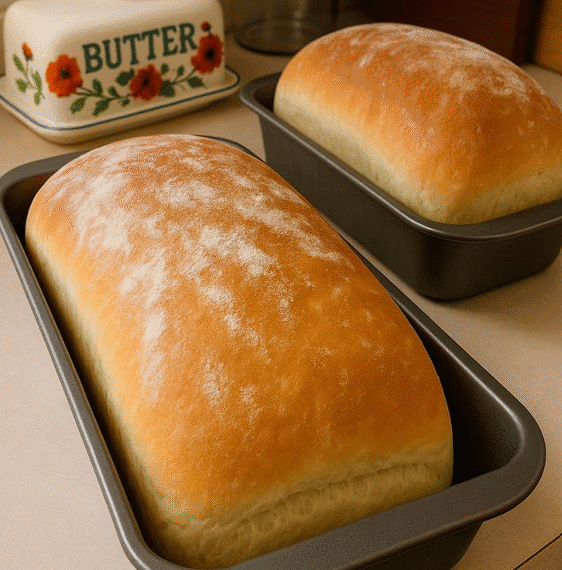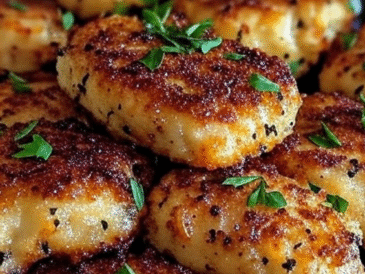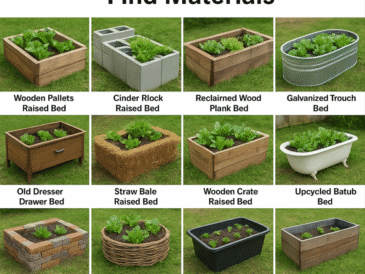Introduction
There’s something deeply satisfying about baking your own bread. The aroma, the golden crust, the soft, chewy center—it’s comfort food at its finest. But traditional bread baking often feels daunting, especially with all the kneading, proofing, and timing involved.
That’s where this brilliant no-knead bread recipe changes everything. With just four simple ingredients, no fancy equipment, and minimal hands-on time, you can create an artisan-style loaf that rivals any bakery. Whether you’re an experienced home baker or just starting your bread-making journey, this guide will walk you through every step to make perfect no-knead bread.
Why No-Knead Bread is a Game-Changer
No-knead bread has become a staple among home cooks for good reason. It removes the intimidation factor from bread baking without sacrificing taste or texture.
Key Benefits of No-Knead Bread:
- No Kneading Required: Let time do the work of gluten development.
- Simple Ingredients: Just flour, water, yeast, and salt.
- Incredible Texture: Crispy crust with a soft, open crumb interior.
- Minimal Equipment: A Dutch oven helps, but it’s not essential.
- Versatile Recipe: Easily customize with herbs, cheese, and more.
Essential Ingredients for No-Knead Bread
Creating this stunning loaf starts with pantry staples. Here’s what you’ll need:
Basic Ingredients:
- 3 cups all-purpose flour – Provides structure and a tender crumb. Bread flour is a suitable alternative for a chewier texture.
- 1½ cups warm water – Helps activate the yeast and hydrate the flour.
- 1 teaspoon active dry yeast – Enables the dough to rise during fermentation.
- 1 teaspoon salt – Balances and enhances the flavor.
Optional Add-Ins:
- Honey or sugar (1 tsp) – Adds a hint of sweetness.
- Olive oil (2 tbsp) – Softens the crust and enriches flavor.
- Dried herbs (1 tsp) – Think rosemary, thyme, or garlic powder.
- Shredded cheese (½ cup) – Cheddar, Parmesan, or Gruyère add savory depth.
- Dried fruit or chopped nuts (½ cup) – Perfect for sweet or hearty variations.
Step-by-Step No-Knead Bread Recipe
Step 1: Mix the Dough
- In a large bowl, whisk together flour, yeast, and salt.
- Pour in the warm water and stir until a shaggy, sticky dough forms.
- Cover the bowl with plastic wrap or a clean towel.
Tip: No kneading is necessary—just mix until combined.
Step 2: First Rise (12–18 Hours)
- Let the dough rest at room temperature (around 70°F) for 12 to 18 hours.
- The dough should double in size and become bubbly and airy.
Why it matters: This slow fermentation builds flavor and texture naturally.
Step 3: Shape the Dough
- Lightly flour a surface and turn the dough out gently.
- Use floured hands to shape it into a rough ball.
- Place on parchment paper for easier transfer later.
- Cover with a towel and let rest while the oven preheats.
Step 4: Preheat the Dutch Oven
- Place a Dutch oven (with lid) into the oven.
- Preheat to 450°F (232°C) for at least 30 minutes.
Pro Tip: The preheated Dutch oven creates steam, which forms a crackly crust.
Step 5: Bake the Bread
- Carefully remove the hot Dutch oven.
- Lift the dough with parchment paper and place it inside.
- Cover and bake for 30 minutes.
- Remove the lid and bake for another 15–20 minutes, until golden brown.
The bread is done when it sounds hollow when tapped underneath.
Step 6: Cool Before Slicing
- Transfer to a wire rack and let cool at least 1 hour before slicing.
- This allows the interior to set properly.
Pro Tips for Perfect Results
- Use fresh yeast: Expired yeast won’t rise properly.
- Longer fermentation = better flavor: Don’t rush the rise.
- Score the dough (optional): A shallow cut on top can help the loaf expand more evenly.
- Avoid slicing too soon: Cooling fully prevents a gummy interior.
No Dutch Oven? Try These Alternatives
Don’t have a Dutch oven? No problem. You can still bake excellent bread.
- Baking Sheet + Water Pan: Place dough on a baking sheet, and a pan of hot water on the oven floor to generate steam.
- Pizza Stone + Bowl: Bake on a hot stone and cover with a heatproof bowl.
Flavor Variations to Try
Experiment with these mix-ins to add personality to your loaf:
- Sun-Dried Tomato & Basil: Add ½ cup chopped sun-dried tomatoes + 2 tbsp fresh basil.
- Garlic & Herb: Mix in 1 tsp garlic powder + 1 tsp dried rosemary.
- Cheddar Jalapeño: Add ½ cup shredded cheddar + 1 tbsp chopped jalapeños.
- Cinnamon Raisin: Stir in 2 tbsp sugar, 1 tsp cinnamon, and ½ cup raisins.
- Nutty Whole Wheat: Use 50% whole wheat flour and add ½ cup chopped walnuts.
Storage and Reheating Tips
Room Temperature: Store in a paper bag or wrapped in a towel for up to 3 days. Avoid airtight containers—they trap moisture and soften the crust.
Freezing: Slice and freeze in a sealed bag. Toast or reheat from frozen as needed.
Reheating: Refresh the crust by placing the loaf in a 350°F oven for 10 minutes.
Frequently Asked Questions (FAQs)
Can I use instant yeast instead of active dry?
Yes! You can use the same amount. There’s no need to activate it in water—just mix it in with the dry ingredients.
Can I substitute whole wheat flour?
Absolutely. Start by replacing half the flour and increase the water slightly to maintain dough hydration.
Why didn’t my dough rise?
Common issues include expired yeast or a cool room temperature. Aim for a cozy environment (around 70°F).
How do I get a crisper crust?
Let the loaf cool in the oven with the door slightly ajar for 10 minutes after baking.
Is this recipe gluten-free friendly?
You can use a 1:1 gluten-free flour blend, though the texture may differ slightly from traditional wheat bread.
Conclusion
This brilliant no-knead bread recipe proves that artisan-style bread doesn’t require professional skills, fancy equipment, or a time-consuming process. With a bit of patience and a handful of pantry staples, you can create golden, crusty loaves that will impress your family and friends every time.
Whether you’re looking to level up your baking game or simply enjoy the satisfaction of homemade bread, this recipe delivers consistent, mouth-watering results.




